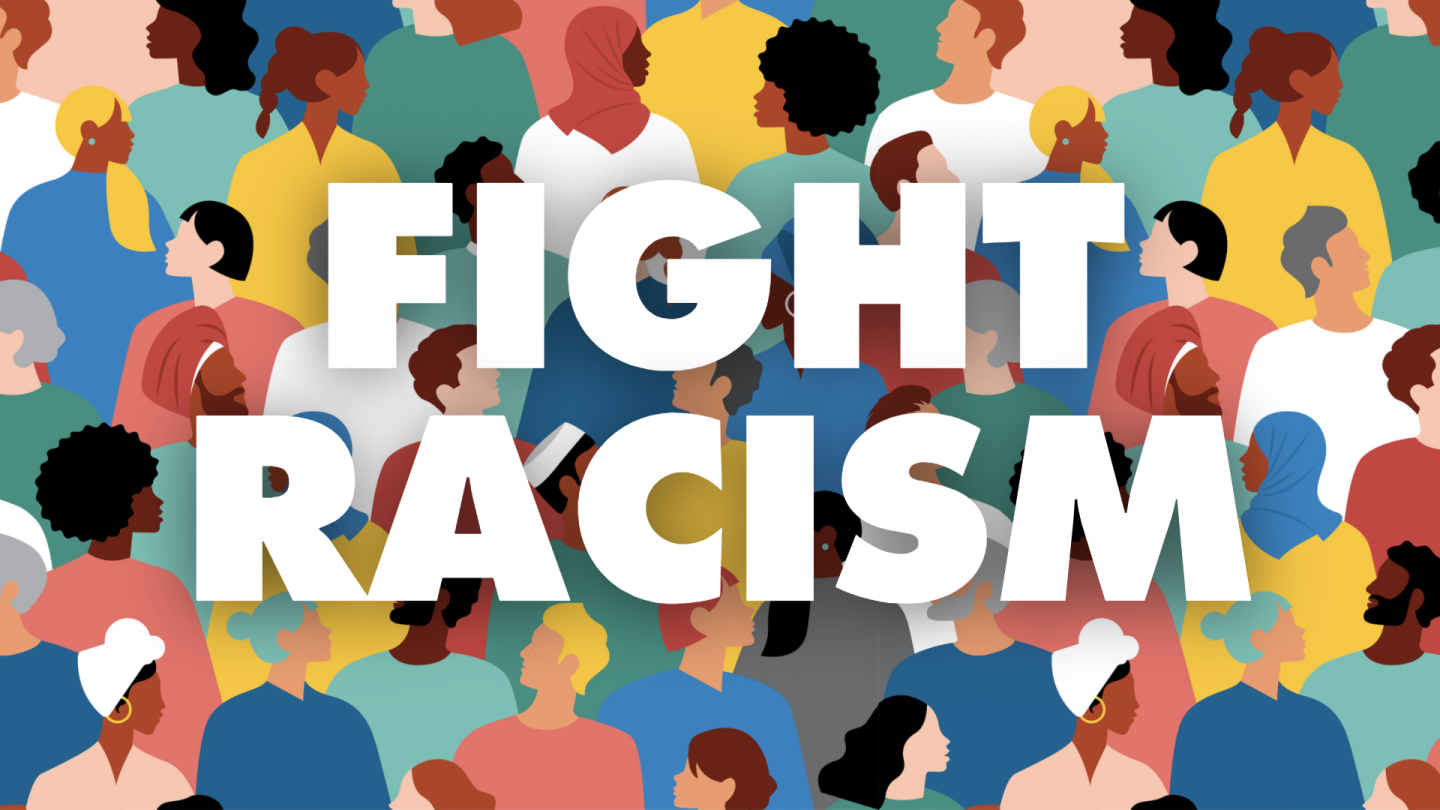Racism continues to affect Americans every day. If we want to create a more just and equitable society, our approach must be backed by facts and not by emotional arguments that only sound good on paper. Rent control is the perfect example. Some activists claim that rent control policies benefit people of color, but these “benefits” are overshadowed by the other outcomes of rent control, which clearly show that rent control benefits rich, white renters the most while disproportionately harming low-income minorities, immigrants, and people of color.
Unfortunately, racism is as much a part of American history as Thanksgiving and the Boston Tea Party. What began as in-your-face racism like slavery and segregation gradually morphed into less obvious forms of discrimination, like a rigged legal system, a crack-cocaine epidemic, and gang promotion in pop culture. However, another form of racism often gets swept under the rug: economic racism.
While it may sound boring, economic racism leads to some nasty outcomes: stealing economic opportunities like high-paying jobs, loans, and housing away from people based on their skin color. Job discrimination based on skin color in America has a well-documented history. At one point, it was even official U.S. government policy to prevent banks from lending to people of color in poor neighborhoods. While these kinds of practices are clearly unfair and now illegal, another form of economic racism continues to fly under the radar. Rent control leads to non-equitable outcomes for low-income minorities, immigrants, and people of color.
At first glance, rent control appears to benefit low-income people who are having issues affording their rent. Progressives champion rent control with slogans that appeal to people of color and paint the housing providers as “evil landlords” out to squeeze profit out of their tenants by any means necessary rather than essential providers of a vital product. The data paints a different picture. The non-partisan and non-biased National Bureau of Economic Research (NBER) studied the effects of rent control in St. Paul, Minnesota after it became city law in November 2021. Their conclusions were stunning:
“[…] we find that the tenants who gained the most from rent control had higher incomes and were more likely to be white, while the owners who lost the most had lower incomes and were more likely to be minorities.”
Robbing Peter to Pay Paul? The Redistribution of Wealth Caused by Rent Control
In her published remarks about why she chose to vote against WA State rent stabilization bill SB 5961, Senator Annette Cleveland referenced a report by the Urban Institute which found that “Black and Hispanic residents are underrepresented in rent-controlled units” and that rent control’s benefits “are concentrated among wealthier, whiter households.” Senator Cleveland also referenced a Brookings Institute study of rent control in San Francisco, which found that, in the long run, rent control “decreases affordability, fuels gentrification, and creates negative spillovers on the surrounding neighborhood.” While current tenants do get lucky under rent control, moving into a rent-controlled neighborhood becomes much more difficult and competitive for low-income outsiders as prices in non-controlled units spike.
In a study called “Profile of Rent-Stabilized Units and Tenants in New York City,” New York University’s housing research arm provided the following data:
NYU’s data clearly shows that a higher percentage of Black tenants lived in Market Rate apartments than in Rent-Stabilized apartments in key boroughs like Queens (36.6% Market Rate vs 28.0% Rent-Stabilized) and the Bronx (17.2% Market Rate vs 8.9% Rent-Stabilized). The proportion of Black tenants living in Market Rate apartments was only slightly smaller in bigger geographic areas like New York City (20.2% Market Rate vs. 22.4% Rent-Stabilized) and Outside Core Manhattan (25.1% Market Rate vs. 25.6% Rent-Stabilized). Conversely, the proportion of white people living in Rent-Stabilized units was higher in key boroughs like Brooklyn (39.1% Market Rate vs 42.1% Rent-Stabilized), Queens (26.7% Market Rate vs 36.0% Rent-Stabilized), and Staten Island (55.6% Market Rate vs 57.4% Rent-Stabilized).
According to the U.S. Census, white people made up 37.5% of the population of New York City in 2022 while Black people made up 23.1%. Back in the NYU data, we can see that white residents occupied 40.6% of Rent-Stabilized units on average (proportionally more than the white population) while Black residents occupied 20.8% of Rent-Stabilized units on average (proportionally less than the Black population).
In a separate case, when Boston finally abolished rent control in 1994 after living under a rent-controlled regulatory environment for 30 years, the number of non-white tenants in formerly rent-controlled units “actually doubled.”
On average, Black Americans earn barely more than half of what white Americans earn, Hispanics earn about 40% less than whites, and undocumented immigrants earn over 64% less than whites. It’s no wonder why minorities, immigrants, and people of color are typically harder hit when it comes to discrimination on the basis of income. When housing providers screen new tenants for rent-controlled units, they will select those with higher incomes and better credit scores (all other things being equal) because there don’t exist any better or more objective signals for a potential resident’s ability to pay rent. This practice punishes low-income people of color, minorities, and immigrants most of all.
Housing providers who manage rent-controlled units don’t really worry about vacancy, so they have little reason to make small repairs and upgrades. Someone living in a rent-controlled unit will typically stay in the unit longer because the deal is so good. And if a rent-controlled unit does come onto the market, there is typically no shortage of people competing to rent it. The earlier Brookings study found that providers of rent-controlled housing “may not invest in maintenance because they can’t recoup these investment by raising rents.” Higher-income tenants can afford to make some repairs and upgrades themselves, but those on the lower end of the income spectrum are stuck with the wall dings, carpet stains, and leaky faucets. The people who suffer the most will once again be lower-income minorities, immigrants and people of color.
The American Dream of building generational wealth through homeownership is one of the surest ways out of poverty. Americans of color and immigrants who become homeowners and rental housing providers are often the ones who are least able to afford sudden increases in cost, especially for those who manage 10 properties or less. In a recent study of 242,000 rent-controlled units in New York, small housing providers (10 units or less) with predominantly rent-controlled units (76%-100%) experienced a 25% vacancy rate in February 2024. 18% of units run by small housing providers with at least a quarter of their units under rent control were vacant. Having a vacant unit doesn’t somehow excuse the property owner from paying their mortgages, property taxes, and other monthly expenses.

Rent control policies are designed to weed small housing providers out of the market. When costs rise faster than rents for small housing providers, their entire financial world can hang in the balance. On the other hand, rent control often means that the wealthiest renters living in the most expensive units get the biggest breaks.
A study by Stanford economists found that, while rent control in San Francisco “strongly benefits the initial cohort of renters who are covered by the law,” it also reduces the available rental housing supply and drives up citywide rents, “damaging housing affordability for future renters.”
The big winners were people who were lucky enough to be under rent control back in 1994. Those renters saved between $2,300 and $6,600 a year — a total of $2.9 billion in benefits from 1994 through 2010. Many of those beneficiaries were older people who had deep roots in their neighborhoods.
By contrast, people who came later faced higher upfront rents and a growing scarcity of rental housing. The number of rent-controlled units declined by 25% between 1994 and 2010, and the total stock of rental housing (some of which isn’t under rent control) declined about 5%.
Overall, the researchers estimated, the renters who came later paid about 5% more than they would have in the absence of rent control. Coincidentally, the total of those additional costs through 2010 was $2.9 billion — essentially the same as the savings reaped by other tenants.
Rent Control’s Winners & Losers
Large corporate housing providers are typically able to weather the rent control storm, but corporates are concentrated in one segment of the housing ladder: large multifamily properties with dozens or hundreds of units. Affordable single-family homes are typically let out by smaller housing providers, sometimes with immigrant or minority backgrounds. Smaller housing providers have a smaller financial cushion compared to the corporate players, which makes them more sensitive to sudden financial setbacks like large appliances breaking, burst water pipes, or extended periods when residents aren’t paying the rent. These housing providers are more likely to sell their affordable single-family homes rather than go underwater due to the added financial strain of rent control laws. Some affordable single-family rental homes are bought by owner-occupants, some are occupied by family of the owner, and some are converted into condos or Airbnbs. Many do not return to the rental housing market, driving a supply crunch in the affordable single-family segment.
A lack of affordable single-family rental homes disproportionately affects low-income families, who must “fall down the housing ladder” into apartments. The people who get hurt the most from rent control are:
- Low-income families who don’t manage to get into a rent-controlled unit
- Minorities and immigrants seeking opportunity in larger cities
- People with low credit scores, criminal history, or a history of evictions
Not only does rent control harm minority and immigrant rental property operators and shower benefits on rich, white renters, it also removes single-family rental homes from the housing supply. Low-income families are left in the dust as the supply of affordable single-family homes dries up while rents in non-controlled neighborhoods spiral out of control. Washington State is already facing a housing affordability crisis, which is driven by a housing supply crisis and multi-decade high inflation and interest rates.
Rent control really is a like a cruel game of musical chairs—when the music stops (rent control is passed) and you don’t have a chair, you lose.
Further Reading
- A Forgotten History of How the US Government Segregated America (NPR)
- Racial Inequality in the United States (US Department of the Treasury)

